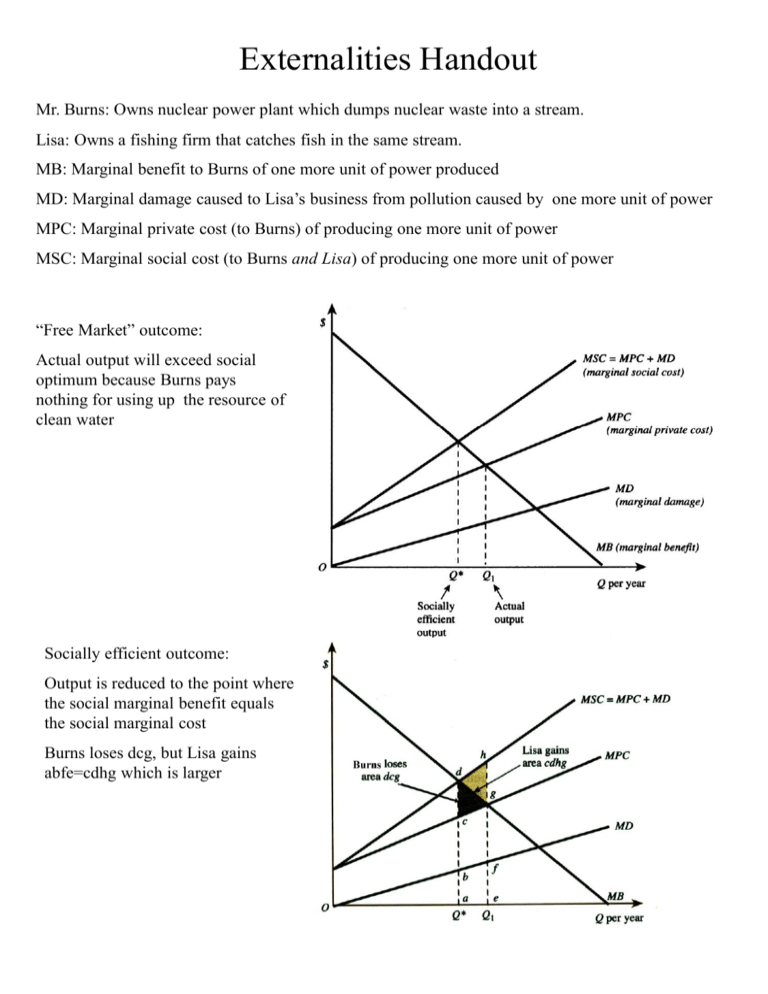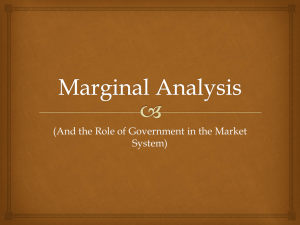ExternalitiesHandout
advertisement

Externalities Handout Mr. Burns: Owns nuclear power plant which dumps nuclear waste into a stream. Lisa: Owns a fishing firm that catches fish in the same stream. MB: Marginal benefit to Burns of one more unit of power produced MD: Marginal damage caused to Lisa’s business from pollution caused by one more unit of power MPC: Marginal private cost (to Burns) of producing one more unit of power MSC: Marginal social cost (to Burns and Lisa) of producing one more unit of power “Free Market” outcome: Actual output will exceed social optimum because Burns pays nothing for using up the resource of clean water Socially efficient outcome: Output is reduced to the point where the social marginal benefit equals the social marginal cost Burns loses dcg, but Lisa gains abfe=cdhg which is larger Using Taxes or Subsidies Reduce Pollution Optimal Production is Q* (same figure as on previous page) Charge Pigouvian tax cd for every unit produced Pay Pigouvian subsidy cd for every unit less than Q1 Pollution Permits Rosen Fig 5 The Coase Theorem Rosen Fig 6 Regardless of who gets the property rights, the socially efficient amount of production should occur. Allocation of property rights affects distribution of resources but not efficiency. Regulation Rosen Fig 7 Two firms, X and Z Identical MPC’s and profit maximizing outputs X1 = Z1 Different MB schedules Suppose it is known that the marginal damage at the efficient level of output is $d Efficiency requires that each firm produce at the point where MB = MPC Optimal response would be a much greater reduction in output for firm Z than for firm X, because it is ‘easier’ for Z to reduce its output than for X to do so








